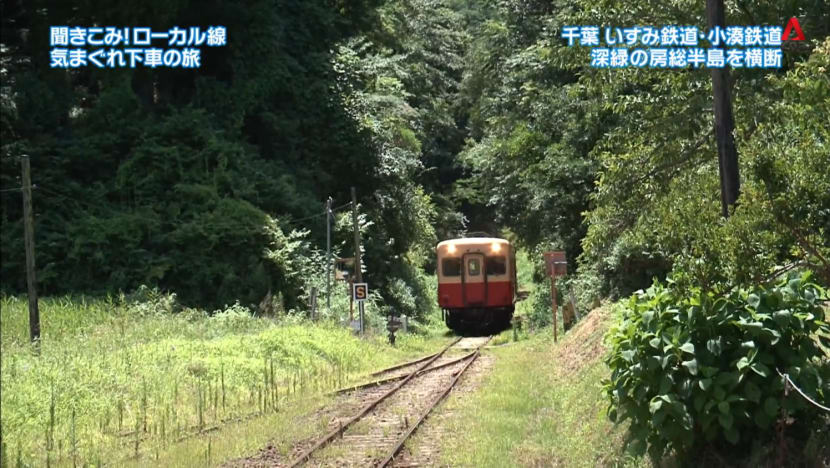Road Trip On Isumi Railway And Kominato Railway - Part 2
Highlights include a nature park where visitors can learn about seasonal plants and wild birds, a temple which features works of a famous sculptor and a restaurant known for its award-winning ramen.

Join us as we continue our two-day journey of enquiry and discovery on the Isumi and Kominato railway lines in Chiba Prefecture. We travelled on the Isumi Line on the first day. We start the second day from Kazusa-Nakano Station, where the Isumi Line ends and the Kominato Line starts. The station opened in 1928 and has been unmanned since it was renovated in 1989. We have an hour till we catch the first train of the day, so we make some enquiries. A resident tells us about Cafe Miharashi-ya, which is known for its iced coffee. About 30 years ago, its owner closed the inn she used to run and decided to start this cafe. It is now a popular spot where the locals hang out.
We catch the 10.45am train and this time, we ride on the Kominato Line, which was established in 1925. We first head to Tsukizaki, three stops away from Kazusa-Nakano. After about 15 minutes, we arrive at Tsukizaki. An elderly man we meet suggests we visit Shimin no Mori, a huge campsite which is also known as the Ichihara Quard’s Forest. We rent some bikes and go to the nature park which is as big as 25 Tokyo Domes. Visitors can learn about seasonal plants and different kinds of wild birds, while enjoying the great nature of Boso Peninsula.
We return to Tsukizaki Station, hop on the 12.25pm train and go to Itabu Station, one stop away. We reach at 12.30pm and find out from a local that there are no eating places around the station. We are told there are some restaurants near Kazusa-Ushiku Stations, six stops away. A resident also tells us about Shinkoji Temple, whose main gate has famous sculptures on it. They are the work of sculptor Takeshi Ihachiro Nobuyoshi, who is also known as Namino Ihachi. He was born in what is now Kamogawa, Chiba Prefecture. During the late Edo period, he was known to be the best sculptor of waves. His work is said to have influenced the ukiyo-e Japanese woodblock prints of Katsushika Hokusai.
We then take the 2.15pm train from Itabu and head to Kazusa-Ushiku. We reach the station after 25 minutes and start looking for a place to eat. A local resident recommends we go to Yuyu-tei, a Chinese restaurant. The same resident offers to drive us to the restaurant, which is five minutes away. Its most popular dish, Ichiha-ramen, has won a food competition held in Ichihara. A few years ago, when Ichihara City celebrated its 50th anniversary, Ichiha-ramen was created as a local speciality by five restaurants in the city. It features miso-based soup, a generous amount of Imobuta pork - a speciality of Chiba Prefecture - and either coarsely grated or dried daikon radish as the topping. The ramen is served with fermented soybean soup.
We head back to Kazusa-Ushiku Station and take the 4.40pm train to Amaariki, which is about 20 minutes away. A local suggests we visit Baikodo, a store selling karinto manju. Unfortunately, it is closed so we catch the 5.25pm train and go to the terminal and goal of this trip, Goi Station. On the train, a passenger recommends the Nemoto Bakery near Goi Station. The train pulls into the station at 5.35pm. We make our way to the bakery, which uses rice flour in its bread, and buy its popular cream buns and curry buns. The owner’s son opened the bakery on the ground floor of their house about five years ago. Now, the mother has taken over and she runs the business by herself. She starts baking bread at 4am every day. Rice flour is used not only in the dough, but also in the custard cream.
We ask the bakery owner for recommendations and she mentions Habuchi Park. It is located inside the 3.6-kilometre-long Kitagoi greenway, which is a famous cherry blossom viewing spot. The park is also popular among kids.
Tips:
1) Visitors can learn about seasonal plants and wild birds at Shimin no Mori
2) Works of famous sculptor Namino Ihachi can be seen at Shinkoji Temple












